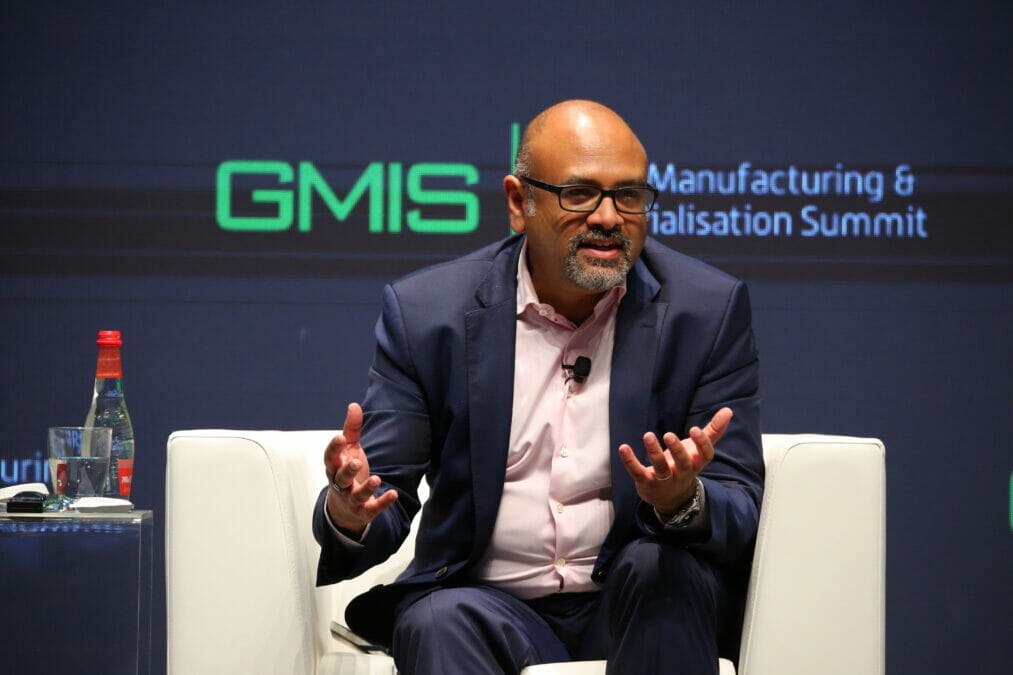Sustainability can be achieved through digital innovation, as well as people transformation – a key message that the public and private sectors must accept and act on as they race to meet Carbon Net Zero targets.
The move to digital and achieving sustainability targets are driving significant change in most organisations.
These two initiatives are intertwined, according to Saideep Raj, Global Innovation Lead at Accenture Strategy and Consulting, because the key elements needed for sustainability now need to be embedded and baked in by design to digital solutions.
“In the past, organisations have adopted lots of bolt-on solutions for sustainability. It’s very hard to make these stick and collect real business value from them. But, when you ingrain these sustainability initiatives as part of digital solutions, that’s when you start to see a significant impact,” he told Information Age at the Global Manufacturing and Industrialisation Summit (GMIS) in Dubai.
This article will explore how to drive sustainability through digital innovation and people transformation, and look at how the public sector can support the private sector in leading a sustainable future.
Digital innovation driving sustainability
There are three key areas where digital innovation and sustainability can intertwine for positive change.
1. Embedding digital technology
The first is the transformation of industries using end-to-end solutions. Embedding digital technologies into key industries and services including manufacturing operations, enterprise IT and supply chain and logistics, will inherently drive sustainability.
In a panel at GMIS, Ruth Porat, CFO at Google’s parent company, Alphabet, mentioned how Google had used AI and machine learning to reduce energy consumption in their data centres by 30%.
Mr. Raj also explained that cloud transition has the potential to reduce IT emissions globally by 5.9%, on average. “This equates to removing 22 million cars off the road,” he said.
2. People transformation
Digital transformation is not just about technology, but also people.
Organisations need to create sustainable leadership and organisational change to drive adoption of sustainable practices, while continuing to support the technology skills development that’s needed to sustain innovation.
“This is equally challenging as the technical aspects, getting change to stick into something that is systemic, instead of a one off, is difficult,” added Mr. Raj.
The introduction of the science of change to the boardroom to change leaders’ real behavioral characteristics is a solution – changing intent to actual action, which is then filtered down an organisation.
“This acts as a catalyst to drive change at speed,” said Mr Raj.
3. Customer consumption
Implementing systemic change in an organisation supports the change we are already seeing in customer consumption preferences for more sustainable products and services.
“The key with changing customer consumption preferences is to start experimenting with customers in both B2B and B2C. The fabric of this approach is agile and iterative, according to Mr. Raj.
“These three things combine to create value added innovation for sustainability at speed, which is what every business wants,” he added.
 Saideep Raj spoke at GMIS in Dubai.[/caption]
Saideep Raj spoke at GMIS in Dubai.[/caption]
Procter & Gamble case study
Procter & Gamble (P&G), like many other consumer packaged goods (CPG) organisations, find it difficult to innovate at a pace that matches rapidly changing market demands.
To solve this problem, P&G adopted an artificial intelligence solution to help speed up the innovation of product development, particularly in the formulation of products.
Accenture worked with the product development group to make the product formulation process more efficient. By using AI and machine learning models to map the thousands of ingredients, P&G were able to optimise its supply chain and accelerate the product development cycle.
The digital innovation, “enabled P&G employees to narrow the relevant search space quickly, rather than having to manually find and consider thousands of possible formulation combinations,” reads the case study.
This digital transformation project also lead to a cultural transformation, which was necessary to take advantage of these new insights and efficiencies. As timeframes for ingredient acquisition and formulation compressed, this allowed teams to experiment more readily and rely on automated processes for product development, ushering in a new era of machine-human collaboration at P&G.
“It led to a change with how they engaged with technology,” commented Mr. Raj.
 The biggest trends in tech sustainability
The biggest trends in tech sustainability
Public and private sector collaboration
The private sector can lead the world’s sustainability response, mobilise the capital and technology needed.
However, according to a sustainability study conducted by the United Nations Global Compact and Accenture, only 18% of CEOs believe governments and policymakers have given them the clarity needed to meet their sustainability and climate change targets.
Business leaders, who are increasing sustainability budgets and accelerating R&D in climate-resilient solutions, need governments to make actionable decisions, particularly in areas of clear carbon pricing, infrastructure investment and financial commitments.
“Business as usual is no longer an option,” commented Sanda Ojiambo, CEO and Executive Director of the UN Global Compact.
“It is clear from the CEOs we surveyed that the business community feels unprepared to deal with our climate emergency. The UN Global Compact has a critical role to play in helping companies develop practical tools and effective best practices to deal with the challenges ahead, while also ensuring they can engage with governments on policy and regulation.”







